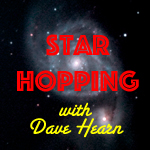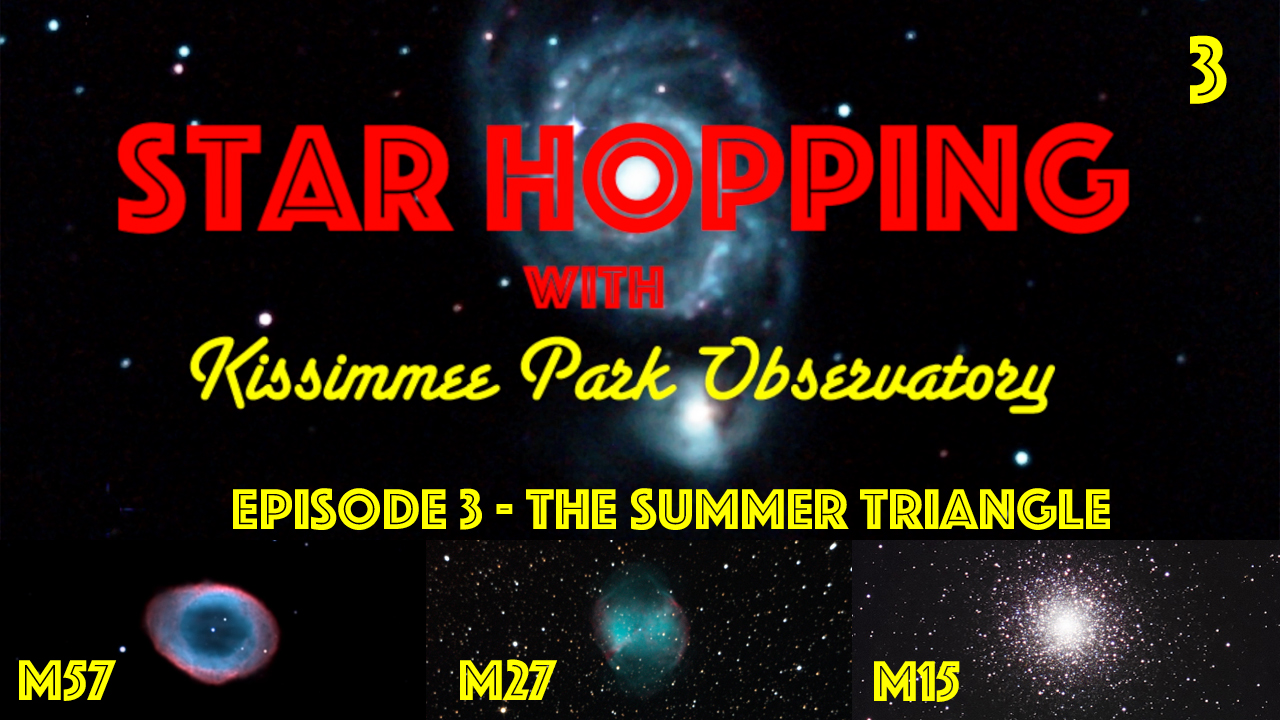In Episode SH003 of Star Hopping…
In this edition we’re looking at the Summer Triangle, and three of the best deep sky objects within it.
Please let me know any remarks you might have about the series, particularly the sci-fi format for the set. Does it work or is it too strange? I’m aiming more at beginners than the advanced group, because I figure they all have go-to telescope systems! I’m also looking for any and all good ideas for content. I could do how-to’s for star hops forever, but I would like to mix it up a little as well. As you can tell I am really excited about the series, and I think it has a lot of good potential and could help a lot of folks getting started in astronomy. If you’re following KPO here, I’d really appreciate it if you’d subscribe over at our YouTube channel; it would really help to increase views and grow the KPO community there.
Intro
Now that we are well into Autumn, the stars of Summer are starting to slide westward. The night sky is kind of a time machine with the Present being anchored in the Eastern sky around 8 PM in the evening. As you look west, you are seeing into the Past – stars that were in the East at 8 PM a couple months ago. And if you check out the Eastern stars late at night, you’re looking into the Future at stars that will be rising at 8 PM in a few months. Make sense?
So, if you look straight up at the zenith at 8 or 9 PM in October, you will see the bright stars of Summer and the Milky Way, starting their progression toward the horizon, giving way to the stars of Autumn now appearing in the East in the early evening. So let’s hang on to Summer a little longer and check out some of the brightest stars in the sky, which form the Summer Triangle.
The Summer Triangle
So while locating this set of deep sky objects for this episode, you’ll be straining your neck to look straight up! Very possibly a chaise lounge might be in order! In the early evening, directly above you, you will see three very bright stars: Vega, in the constellation of Lyra the harp, Deneb, in the constellation of Cygnus the swan, and Altair, the brightest star in the constellation of Aquila the eagle. This trio of stellar beacons that rise in the East in June and July form the famous Summer Triangle.
Nebulae: Birth and Death of Stars
Summer skies hold lots of star clusters and nebulae associated with the Milky Way. Nebulae can be found in several types, based on the point in the life cycles of the stars associated with them. When nebulae contain newly formed stars, they glow, excited by the radiation of the stars within them. These are called emission nebula, because they emit light themselves. As the stars grow older and finally use up their internal nuclear fuel, other nebulae are formed. This occurs when a star expels its outer shell, as it approaches the end of its life. These bubbles of gas around these dying stars often appear round. And in a telescope, they sometimes look like a planet. For this reason these types of objects are called Planetary Nebulae…
CLICK >>> Watch this Episode on YouTube!
Let us know your Questions and Comments!
Please feel free to leave a question or comment below, and we will respond as quickly as we can. You can also reach out to Dave on Twitter @StarHoppingMan.
Connect with Star Hopping!
We would love to have you join us on our various social media sites, and subscribe to our newsletter. Visit our Contact page to connect with us!
Credits for this Episode
- Star Chart Images & Simulations Courtesy of SkySafari Astronomy http://SkySafariAstronomy.com.
- Ring Nebula image by Adam Block
- Dumbbell Nebula image by David Hearn / Kissimmee Park Observatory
- M15 image by The Hubble Space Telescope


